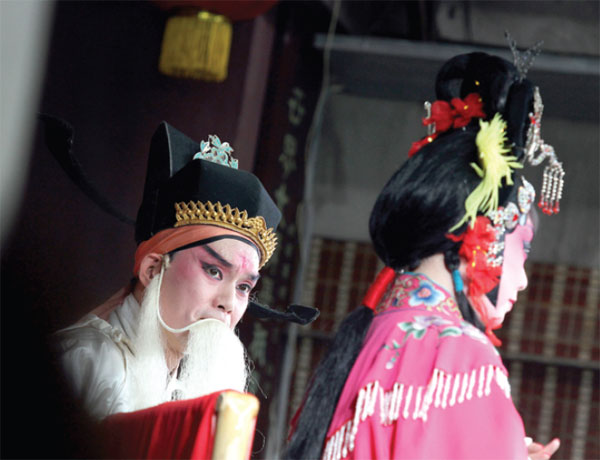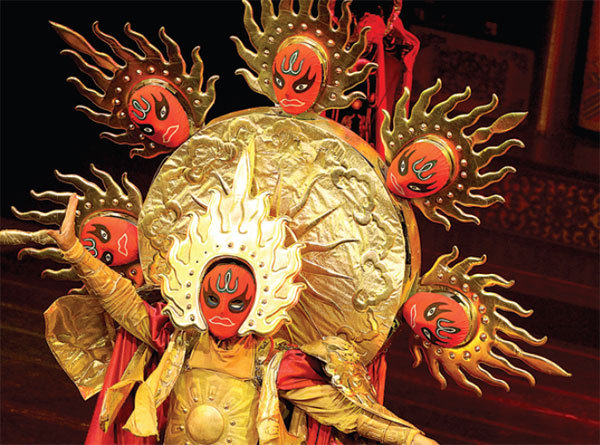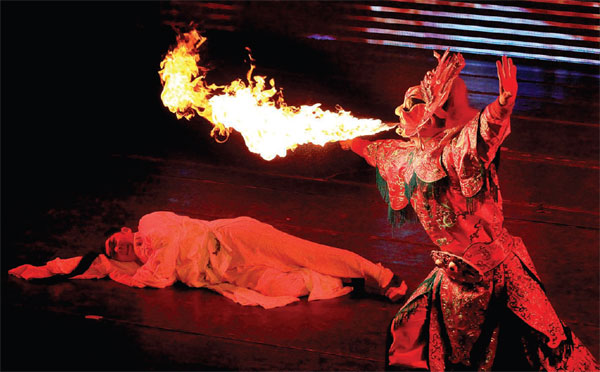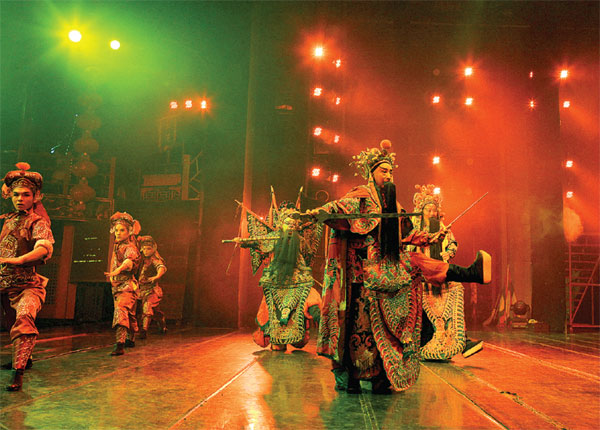An old flame is putting on a new face
Sichuan Opera sprang from the Southwest China traditions of the early Qing Dynasty and is maintaining its vitality with reforms and modern elements.
Sichuan Opera is one of China's oldest opera traditions. During the early years of the Qing Dynasty (1644-1911), there were five independent local operas simultaneously prevalent in Sichuan province and surroundings. Overtime, they gradually merged and evolved into what is today called Sichuan Opera. This opera tradition is distinguished by a number of famous stunts such as the "face-changing" and "fire-spitting" tricks. Chengdu, capital of Sichuan province, remains the main home of opera's tradition, while other influential locales include Yunnan, Guizhou and other provinces in Southwest China.
Like other traditional Chinese opera styles, Sichuan Opera has faced challenges in attracting new generations of enthusiasts and maintaining its status in a world that has seen new entertainment forms emerging in film, the Internet and pop music. In recent decades, many reforms have been made adding modern, fashionable elements to the opera. Through these, Sichuan Opera has had success at home and gained popularity overseas during performance tours.
|
A Sichuan Opera actress prepares for a performance. |
|
Yuelai Teahouse in downtown Chengdu is a popular Sichuan Opera venue. |
|
An actor performs traditional Sichuan Opera's "face-changing" stunt. |
|
An actor performs the "fire-spitting" stunt, one of the most exciting features in Sichuan Opera. All Pictures by Zhu Xingxin / China Daily |
|
In the Sichuan Opera Three Kingdoms, actors play the roles of the three famous Chinese traditional heroes Liu Bei, Guan Yu and Zhang Fei. |
|
The "rolling lights" specialty is unique to Sichuan Opera. It features a man dancing into and out of various difficult acrobatic poses while balancing a lighted oil lamp upon his head. |
(China Daily 02/23/2015 page6)




















